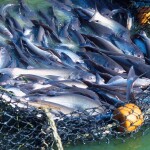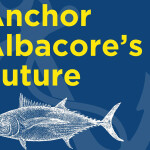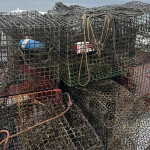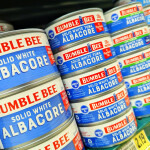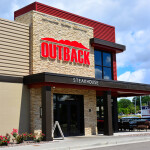Case-ready seafood remains one of packaging’s hottest trends
Sponsored
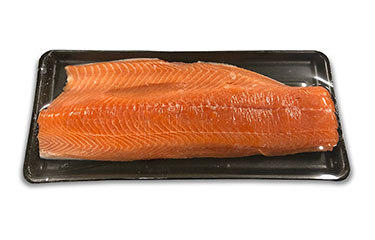
Seafood has been on the move at retail, a phenomenon fueled in large part over the years by advances in case-ready packaging innovations, according to Taunton, Massachusetts, U.S.A.-headquartered Harpak-ULMA.
Nowadays, seafood can be found at designated fresh counters, in frozen aisles, amongst canned goods, and in emerging grocery grab-and-go sections – all of which have seen increased traffic over the course of the COVID-19 pandemic, the packaging OEM told SeafoodSource.
Developments in vacuum skin packaging (VSP) and flow-wrap solutions have allowed many smaller grocers to create a fresh seafood presence in their stores where it didn’t exist before, while also giving large retail chains the ability to produce more seafood-forward prepared meals, Harpak-ULMA’s Ken Forziati, Product Manager for Thermoforming said.
“Automation, materials, and methods are evolving quickly, making fresh, healthy, and appealing case-ready seafood one of the hottest trends in packaging today,” Forziati said.
“It used to be that the only thing the smaller grocery stores had was frozen seafood. Now they have a whole counter set up, and you can see scallops and prepared meals with shrimp and fish. There's all kinds of convenience-friendly options available that were previously never available in those stores.”
Harpak-ULMA offers a suite of horizontal automatic packing machines for the seafood industry that are suitable for VSP, skin-pack, flow-wrapping, thermoforming, and modified atmosphere packaging (MAP) – formats that lend themselves well to the case-ready segment. The highly-configurable machines in the firm’s TFS series, for example, are easily capable of accommodating varying portion sizes and product volumes. More importantly, vacuum-based skin-pack packaging gives these fresh products “a second, almost imperceptible, skin,” Dave Favret, the product manager for the series, explained.
“There is a standard requirement for these films to accommodate a pre-determined rate of oxygen transfer – which dramatically improves freshness and shelf-life,” Favret said.
Forziati and Favret note that retailer demand for oven-ready packaging trays – a popular case-ready feature – has been on the rise lately, as consumers continue to seek value-added proteins that are convenient to prepare as well as compelling and safe to eat. Sustainability, shelf-life optimization, and food safety are table-stakes for seafood retailers and distributors when it comes to their packaging needs in 2022, Forziati and Favret revealed.
From a sustainability standpoint, skin-packed seafood does not require as much material to fully encompass products and preserve their freshness, Favret said. Moreover, the packaging materials and components employed for modern case-ready seafood tend to be recyclable, he added.
“An aluminum, oven-ready tray is a more sustainable option, as is some of the newer film rollstock being made from more recyclable materials. For example, the film used in some thermoformed pouch applications (and compatible with Harpak’s TFS series) are made with a sophisticated, corn-starch base instead of traditional plastics,” Favret said.
Not only do “portion-controlled skin packs look great,” Forziati added, “but they result in reduced food waste since consumers are less likely to buy more than they need.” Reduction of food waste is widely recognized and cited as a major focus of improved sustainability efforts.
Case-ready seafood products now have an edge when it comes to shelf-life, according to Favret.
“If you bring in a fresh piece of fish to display in the case, you probably have three or four days in terms of shelf-life, whereas a case-ready, vacuum skin packed item would offer more like up to 10 days – basically double,” he said.
Forziati noted that case-ready packaging equipment has proven more crucial over the past two years in light of the challenges wrought by the pandemic, particularly those related to the labor landscape and heightened food-safety concerns.
“You're essentially able to replicate to some extent a fishmonger without having the staff that's there,” Forziati said. “Layer COVID onto that and the idea that you now have the option to package fish with little, if any, human contact -- well that’s very attractive to retailers. The consumer can easily, quickly, and safely self-serve fresh seafood, versus a counter model where there’s always potential contact, even though they have gloves on. The reduced labor requirements, convenience factors, and increased safety aspect of case ready coincide closely with todays’ retailer and consumer concerns.”
With case-ready seafood, “you’ve got both the sustainability and the convenience factors combined with the product attractiveness aspect,” Forziati added, “which is pretty close to replicating what you would get from a fishmonger without having an actual fishmonger.”
Moreover, seafood packaging in the case-ready space can feature instructions on how to cook and pair products, Forziati said, lowering one of the long-standing consumer barriers to choosing fresh seafood (lack of familiarity/know how) – a promising trend for the industry.
“Packaging is actually breaking down barriers for people that might otherwise be hesitant to consume seafood for whatever reason: because they're not knowledgeable, because they don't know how to cook it, or they think they don't know how to cook it, or they don't know how to select it,” he said. “That appears to be helping overcome some of the long-standing consumer reluctance around fresh seafood, and is likely helping to drive some of the increased consumption we’re seeing. The trends show that fresh seafood has been steadily displacing traditional meat-based protein sales - and packaging is a big factor behind that trend.”
Harpak-ULMA will share more on the trends driving progress in the case-ready seafood packaging sector at the upcoming Seafood Expo North America, taking place from 13-15 March in Boston, Massachusetts.

